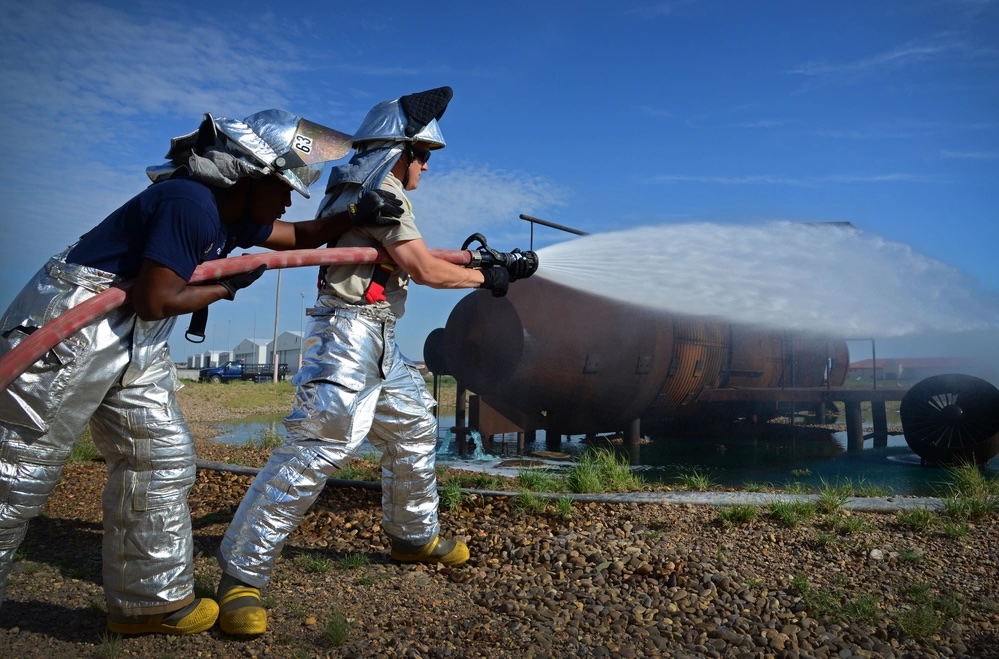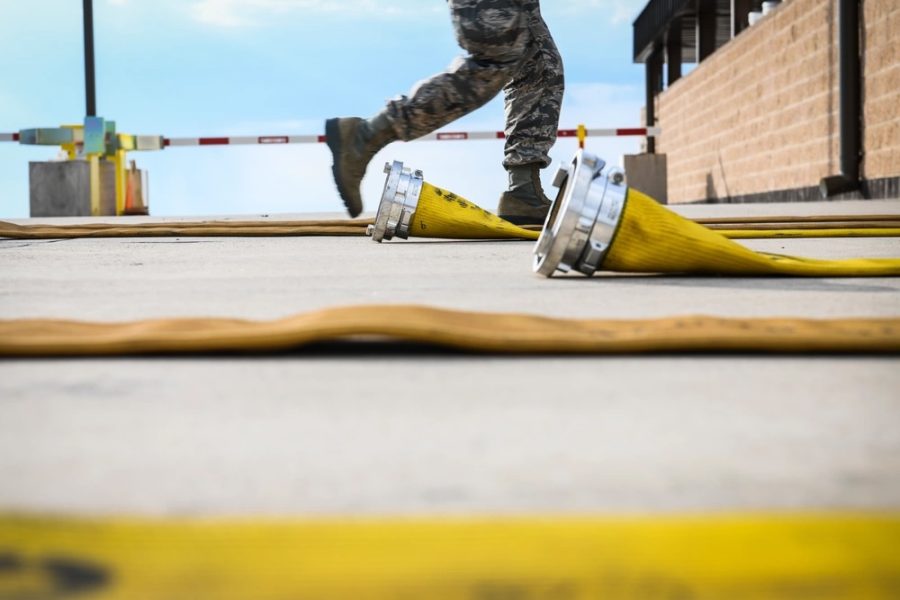The Air Force is investigating a spill of about 7,000 gallons of water containing firefighting chemicals at Cannon Air Force Base, N.M.
The chemicals are per-and polyfluoroalkyl substances, better known as PFAS. They’ve been used in consumer products around the world since the 1950s and the Air Force has used it in firefighting foam since the 1970s. PFAS do not degrade easily in the environment.
Though U.S. government agencies are still figuring out exactly how harmful PFAS are to humans, the World Health Organization classified a type of PFAS called perfluorooctanoic acid (PFOA) as carcinogenic to humans and classified a second type, perfluorooctanesulfonic acid (PFOS), as possibly carcinogenic to humans.
In 2023, the Department of Defense issued specifications for fluorine-free foam (F3), and Tyndall Air Force Base, Fla., became the first Air Force base to transition to it earlier this year. At Cannon, the 7,000 gallons of rinsate, the term for water containing PFAS, had been removed from emergency vehicles as part of that larger effort when the spill happened.
For scale, a 14-by-28-foot swimming pool contains about 15,000 gallons of water, according to Home Depot, while an Olympic swimming pool has about 660,000 gallons.
The rinsate wound up in a lined retention pond at the base’s fire training area some time between July 9 and July 15, according to an Aug. 30 press release, but base leadership did not find out about it until early August. The base removed the water from the pond and put it in storage containers, then hired an independent third party to inspect the liner for holes on Aug. 23.
The third party found the liner “was compromised in several areas with tears of various lengths,” and the base notified the New Mexico Environment Department the next day, the press release states. The base’s drinking water wells “are upstream of the deposit area” and are not affected by the spill, while the U.S. Air Force Civil Engineer Center does not anticipate any off-base wells to be affected either.
Base commander Col. Robert Johnston ordered an investigation into the incident and appointed a task force to “examine and review all current environmental compliance training, policy and procedural guidance to ensure strict adherence to applicable requirements moving forward,” according to the press release.
“We understand the concerns of our community, our Airmen, and their families,” the colonel said in a statement. “Please know that we are working expeditiously to address the affected area. We are committed to taking all necessary steps to ensure such incidents do not happen again in the future.”

In the meantime, samples will be taken from the affected area and studied, and the press release said if any PFAS chemicals do make it into the groundwater, it would be captured by an existing pump and treat system set up at the base’s southeast boundary.
Cannon’s public affairs office referred to its press release when asked by Air & Space Forces Magazine why the rinsate wound up in the pond; why it took several weeks for base leadership to find out; how much of the rinsate was recovered; and what agency is conducting the investigation.
“Col. Johnston, 27th Special Operations Wing and Cannon AFB commander, has ordered a comprehensive investigation into the cause of the improper deposit, and it is underway,” a base spokesperson said. “We have released all the information we have at this time and we will provide updates as additional information becomes available.”
The spill is the most recent episode in a long-running PFAS saga at Cannon. According to the New Mexico Environment Department, PFAS used at firefighting training areas and other Cannon sites percolated into the underlying Ogallala Aquifer, where it left a plume of contaminated groundwater extending at least 2.5 miles off base.
“PFAS have polluted several off-site wells used for irrigation, dairy, and domestic water supply, sometimes at concentrations that greatly exceed the federal lifetime Health Advisory of 70 ng/L,” the department wrote. “PFAS also have been detected in milk produced by one dairy near [Cannon] causing severe economic impact to that dairy.”
One dairy farmer had to euthanize several thousand cows as a result, according to New Mexico news outlet Source NM. While public drinking water wells supplying the nearby city of Clovis showed no detectable PFAS contamination, in 2018 the department issued a Notice of Violation to the Air Force for failing to take timely action to correct the damage.
As of July, the state of New Mexico was still in court requesting the federal government pay for PFAS clean-up efforts, including $850,000 spent removing thousands of PFAS-contaminated cow corpses, Source NM reported.


